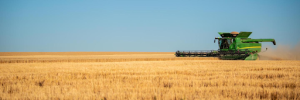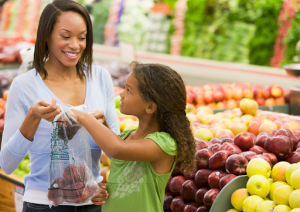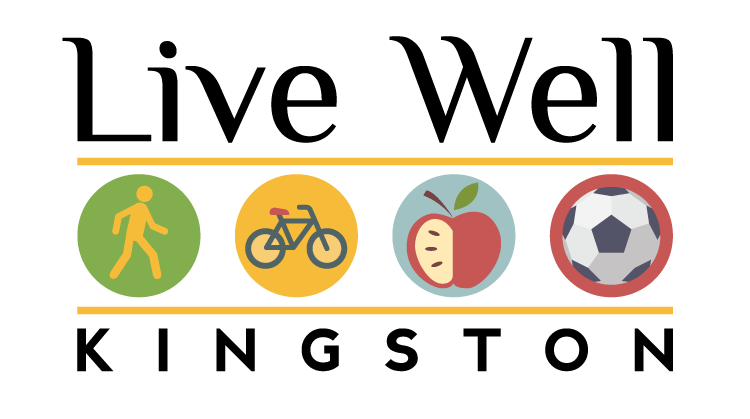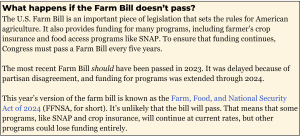Kingston’s Food Policy Bites
Issue 1: September 2024
Welcome to the pilot edition of the Kingston Food Policy Bites!
The City of Kingston’s Department of Health and Wellness is tasked with facilitating policy, systems, and environmental change to benefit the people of Kingston. Some of this work is done through its Live Well Kingston Commission, including the Eat Well focus team. We know that effective policy is built on transparency and solidarity — but we also know that policy can be overly complicated and hard to read. To that end, we want to make the world of food policy more accessible and relevant to our City. That’s why we’re testing out a new initiative: Kingston’s Food Policy Bites.
The U.S. Farm Bill
The Farm Bill is a behemoth in the U.S. food system, influencing everything from crop production to food access. Most of the Farm Bill’s budget is allocated to nutrition programs, but the policies and programs in its many chapters (called “Titles”) have dramatically altered the food system over its 90 year history.
You may have already heard about the Farm Bill. It’s been in the news recently because it should have been reauthorized almost a year ago — the Bill must be updated every five years as part of its funding cycle, or else some of its programs expire — but this process has been held up in a divided Congress.
Whether or not you know about it, the Farm Bill affects all of us, even if we’re not farmers. That’s because the Farm Bill covers three main domains that impact the type and quality of food we eat:
- Food Access
- Food Choice (protection for farmers), and
- Food Impact (conservation of the environment)

A combine harvests a field of wheat, one of the crops most subsidized by the Farm Bill. Source: USDA
Food Access: How the Farm Bill feeds America
The Farm Bill puts close to 100 billion dollars in the economy each year. The majority of this goes into SNAP, formerly known as food stamps, but the Farm Bill also funds a number of programs to assist local farmer’s markets.
SNAP supplements the cost of groceries for 41 million Americans each year, including 20 million children. In New York State, SNAP assists nearly 23% of families, including 851,000 children. Hunger Solutions NY calls SNAP “our nation’s largest and most effective anti-hunger program.” Indeed, SNAP delivers nine times more food to people in need than food banks and food charities.
In this way, SNAP provides significant economic assistance to vulnerable communities. By supplementing food payments, SNAP

has lifted 2.88 million people out of poverty (See appendix 7 here). In some neighborhoods, SNAP payments make up half of a store’s revenue. As an economic stimulant, SNAP adds $1.80 to the economy for every $1 spent on the program.
The Farm Bill also gives lawmakers the opportunity to update food programs. To illustrate:
SNAP provides benefits based on the lowest monthly cost of food, determined by the USDA’s Thrifty Food Plan. The 2018 Farm Bill directed the USDA to update the Thrifty Food Plan to include a wider range of diets, including more healthy foods. As a result, SNAP benefits increased to allow families the flexibility to purchase more healthy foods & accommodate different diets.
The 2014 Farm Bill began funding the Farmer’s Market Promotion Program, designed to increase local market access for “direct-to-consumer” sales. Poughkeepsie, NY was awarded almost $600,000 to expand their market through this program.
In short, the Farm Bill helps determine how food gets on American’s plates. But through the bill’s targeted subsidies, it also helps determine what kinds of food end up in markets, like at the grocery store, big food distributors, school food service programs, and more.
Food Choice: How the Farm Bill influence food production
Farming is a risky business. Farmers often go into debt each year to buy inputs for their farms, including seed, feed, machinery, and labor. And after a season’s hard work, there’s no guarantee the harvest will be successful: crops could fail, or markets could fetch poor prices. The Farm Bill was designed to protect farmers from these bad years. It provides monetary assistance to farms in two ways: through commodity payments to farmers and by subsidizing crop insurance. These programs can guarantee that some farmers make a certain amount of profit each year — provided that farmers meet certain criteria.
These eligibility criteria are where the Farm Bill affects the foods we eat in Kingston. Only a few kinds of crops and farms are able to access the Farm Bill’s 14 billion dollars in annual payments. These crops include several grains, legumes, and oilseed, but over half of all payments go to just four crops: corn, soybean, wheat, and rice. This is problematic for the food and health systems because of what happens next:
- It doesn’t matter how much consumers are willing to pay for these crops, because the government will guarantee a certain “reference price” regardless.
- Big companies are therefore incentivized to produce as much of these crops as possible.
- This makes producing the “big four” crops very profitable.
- The market is flooded with these crops.
- They are present most often in highly processed forms, as corn syrup, soybean oil, and ingredients in high-calorie, low-nutrient packaged foods. High fructose corn syrup accounted for 8% of America’s calories in 2009.
This policy privileges just a few corporations over all other farmers in America. Less than 31% of small scale farms received commodity payments in 2021, compared to 75% of commercial farms. Among those who receive payments, payments are highly concentrated: just 10% of recipients are awarded 79% of all farm subsidies.
The abundance of these crops has downstream impacts on industry: the American meat industry has access to vast quantities of artificially inexpensive feed, hiding the true cost of meat production. Excess corn has also created a market for ethanol fuels and bio-based plastics, further entrenching the role of industrial agriculture in the American economy.
Food Impact: How the Farm Bill influences the environment
To borrow from Whitman, the Farm Bill contains multitudes. As much as the Farm Bill can promote highly industrialized agriculture, it can also work to improve the relationship between agriculture and the environment, inclusive of ecosystems like the rivers and forests as well as human health. Many agricultural practices that benefit nature also benefit human health, like reducing pesticides frequently linked with human illness.
The Farm Bill has traditionally encouraged conservation in agricultural landscapes. Today it provides access to funds that allow farmers to make sustainable choices with their land, including funding EQIP, a resource conservation program that covers 75% of farmer’s new environmentally-friendly management practices.
Farm Bill funding also works towards making organic farming more viable. While the “organic” label doesn’t guarantee quality produce, organic agriculture uses safer pesticides. This has been linked with numerous health benefits for individuals and is proven to benefit the environment through improved soil health.
Link to the Farm, Food, and National Security Act
More reading on the Farm Bill:
– A brief, including a breakdown of Farm Bill spending
– An analysis of the 2024 bill by the National Sustainable Agriculture Coalition
– A 2024 Farm Bill wishlist from the Northeast Organic Farming Association of New York
– The four main conservation programs funded by the Bill
– A map showing the beneficiaries of Farm subsidies (hint: there are very few in Ulster County!)
Interested in further resources?
Sign up for future editions of the Food Policy Bites here.
If you want to read more about food policy, this resource can connect you to several food policy organizations. Many of these publish op-eds about new policies!
*Special thanks to Brendan Walsh, graduate student at the Bard Center for Environmental Policy and food policy intern for the Department of Health and Wellness, in developing this project.*





